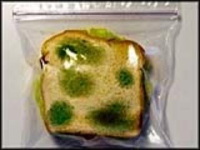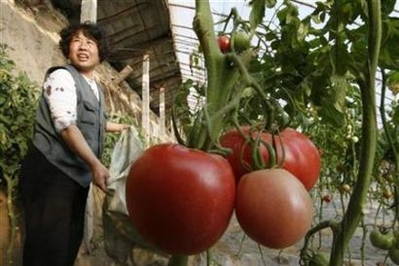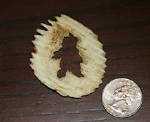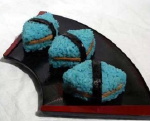The Turkey-Tryptophan Myth, and why do big meals make you drowsy? —
Thanksgiving is approaching, which means the "turkey makes you tired because it has high levels of tryptophan" urban legend shall once again be heard at tables throughout America. Baylor College of Medicine dietitian Rebecca Reeves debunks this legend in an interview with the
Houston Chronicle:
Q: So the tryptophan in turkey doesn't make you sleepy, right?
A: I am not sure how (that) gained wide acceptance. The urban legend is that the tryptophan in turkey is what makes you sleepy on Thanksgiving. Yes, the amino acid tryptophan is present in turkey, and in certain doses it can make you sleepy. But in reality, you'd need to eat an entire 40-pound turkey to get enough tryptophan to make a difference.
But her explanation of why people actually get tired after Thanksgiving dinner raises more questions in my mind than it answers:
Q: So why do people take a nap on the couch?
A: It's probably more due to alcohol. Or it could be that you got up that morning early to travel. Or it's been a long, beautiful day, and you're just tired. I hate to even mention this, but I've seen claims that because you're increasing your carbohydrates, you're increasing your blood sugar, maybe this could lead to sleepiness. But I'm not sure I agree with that.
Why is she doubtful that increasing carbohydrates (and thereby increasing blood sugar) can make you tired? She doesn't offer an explanation. Wikipedia offers a good summary of the
"increased carbohydrates makes you tired" theory, and it sounds reasonable to me (more reasonable than the theory that the drowsiness is all due to having had a few beers, or the fact that it's been "a long, beautiful day"):
It has been demonstrated in both animal models and in humans that ingestion of a meal rich in carbohydrates triggers release of insulin. Insulin in turn stimulates the uptake of large neutral branched-chain amino acids (LNAA) but not tryptophan (trp) into muscle, increasing the ratio of trp to LNAA in the blood stream. The resulting increased ratio of tryptophan to large neutral amino acids in the blood reduces competition at the large neutral amino acid transporter resulting in the uptake of tryptophan across the blood-brain barrier into the central nervous system (CNS). Once inside the CNS, tryptophan is converted into serotonin in the raphe nuclei by the normal enzymatic pathway. The resultant serotonin is further metabolised into melatonin by the pineal gland. Hence, these data suggest that "feast-induced drowsiness," and in particular, the common post-Christmas and American post-Thanksgiving dinner drowsiness, may be the result of a heavy meal rich in carbohydrates which, via an indirect mechanism, increases the production of sleep-promoting melatonin in the brain.



 From Cabela's you can buy actual Jackalope Sausage:
From Cabela's you can buy actual Jackalope Sausage: Designed to deter sandwich thieves. Green splotches are printed on both sides: "After your sandwich is placed inside, no one will want to touch it."
Designed to deter sandwich thieves. Green splotches are printed on both sides: "After your sandwich is placed inside, no one will want to touch it." Product placement has reached the TV news. On the desk in front of the anchors of Las Vegas's Fox 5 TV news sit two cups of McDonald's iced coffee. McDonald's is paying for the coffee to be there. But the best part: it's not real coffee. It's just a plastic simulation of iced coffee. From the Las Vegas Sun:
Product placement has reached the TV news. On the desk in front of the anchors of Las Vegas's Fox 5 TV news sit two cups of McDonald's iced coffee. McDonald's is paying for the coffee to be there. But the best part: it's not real coffee. It's just a plastic simulation of iced coffee. From the Las Vegas Sun: On May 15th thousands of people around the world went to their local grocery store to panic buy carrots. They were members of the facebook group called "On May 15th 2008, everybody needs to go out and panic buy carrots." From northernnews.com:
On May 15th thousands of people around the world went to their local grocery store to panic buy carrots. They were members of the facebook group called "On May 15th 2008, everybody needs to go out and panic buy carrots." From northernnews.com:  An ethics panel commissioned by the Swiss government has determined that the arbitrary killing of plants is morally wrong. From The Weekly Standard:
An ethics panel commissioned by the Swiss government has determined that the arbitrary killing of plants is morally wrong. From The Weekly Standard:
 Don't miss out on this gem on eBay. The seller says: "I have here for auction one ruffled potato chip that looks like Bigfoot. Just for fun, let's call him Chipfoot. 😊 The chip is in very good/stable condition and should ship quite nicely."
Don't miss out on this gem on eBay. The seller says: "I have here for auction one ruffled potato chip that looks like Bigfoot. Just for fun, let's call him Chipfoot. 😊 The chip is in very good/stable condition and should ship quite nicely."
 Trifter.com has collected examples of foods that have either been made to look like Viagra, or have been renamed after it. The list includes Viagra Gelato, Viagra ice cream, Viagra spam mousse, Viagra cake, and Viagra musubi.
Trifter.com has collected examples of foods that have either been made to look like Viagra, or have been renamed after it. The list includes Viagra Gelato, Viagra ice cream, Viagra spam mousse, Viagra cake, and Viagra musubi. 